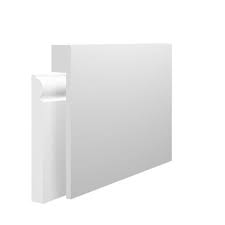When it comes to interior design, it’s often the small details that make the biggest impact. Skirting boards and architraves might seem like simple decorative elements, but they play a vital role in achieving a clean, professional finish in your home. They frame rooms beautifully, cover imperfections, and add a touch of style that brings your walls, floors, and doors together seamlessly. Whether you prefer a classic or contemporary look, skirting and architrave are essential finishing touches that can completely transform your interiors.
Understanding Skirting and Architrave
Skirting boards are the mouldings that run along the bottom of your walls where they meet the floor. Their purpose is not just decorative—they protect the lower walls from scuffs, furniture marks, and daily wear and tear. Architraves, on the other hand, are fitted around doors and windows. They cover the joint between the wall and the door frame, providing a neat transition and a more polished appearance. Together, skirting and architrave add balance and continuity to a room, tying the design together from floor to ceiling.
Why They Matter in Home Design
Many homeowners underestimate the impact of skirting and skirting & architrave on the overall look of their interiors. These features help define architectural style and bring a sense of cohesion to your rooms. Skirting boards create a visual boundary, while architraves highlight the structural features of doors and windows. When matched correctly, they elevate the entire aesthetic of your home. They also hide imperfections like uneven plaster or gaps between walls and floors, ensuring a flawless finish.
Choosing the Right Style for Your Home
The design of your skirting and architrave should complement your home’s style. For modern interiors, clean and simple profiles such as square edge, bullnose, or chamfered styles work beautifully. They give a sleek, minimalist look that fits well in contemporary spaces. Traditional homes, however, often benefit from more detailed mouldings such as ogee, torus, or lamb’s tongue profiles. These designs add a touch of elegance and depth, reflecting classic craftsmanship. The key is to ensure consistency—using matching or complementary styles throughout your home helps maintain a unified, professional finish.
Material Options: MDF vs Wood
When choosing skirting and architrave, the material you select can make a big difference in both appearance and performance. MDF (Medium Density Fibreboard) is one of the most popular options today because it’s affordable, durable, and easy to paint. It won’t warp or crack like natural wood, making it a great choice for most modern homes. MDF is also available in a primed finish, saving time during installation.
Solid wood skirting and architraves, such as oak or pine, offer a more natural, luxurious look. They can be stained or varnished to showcase the grain, making them ideal for traditional or rustic interiors. For bathrooms or kitchens where moisture levels are high, water-resistant materials or PVC options are also worth considering.
Matching Skirting and Architrave for a Seamless Look
One of the best ways to achieve a professional finish is to match your skirting boards and architraves. This doesn’t just mean choosing the same color, but also ensuring the profiles and thicknesses align for a consistent appearance. For example, if you select a torus profile for your skirting, use the same profile for your architrave. Matching styles create a sense of flow throughout the space.
Alternatively, if you want a bolder look, you can use contrasting colors. Painting skirting and architraves in darker tones against light walls can make the details stand out beautifully. A white or cream finish, however, is timeless and keeps interiors feeling fresh and bright.
Installation Tips
Installing skirting and architrave is a task that many DIY enthusiasts can handle with basic tools. Start by measuring accurately and cutting the pieces to size using a mitre saw for clean corners. Use adhesive or finishing nails to secure them, then fill gaps and nail holes with caulk for a smooth finish. Always sand lightly before painting or applying your final coat. If you’re after a flawless result, hiring a professional installer can save time and ensure precision.
Maintaining Skirting and Architrave
Both MDF and wooden trims are low-maintenance once installed. Regular dusting and the occasional wipe with a damp cloth are usually enough to keep them looking fresh. Painted finishes may need a touch-up every few years, especially in high-traffic areas. Wooden trims can be re-polished or re-stained to maintain their shine and color.
Conclusion
Skirting and architrave may seem like small details, but they play an essential role in creating a polished and cohesive home interior. They protect your walls, frame your doors beautifully, and add architectural interest that enhances every room. By choosing the right style, material, and finish, you can transform your space into one that feels complete, stylish, and perfectly balanced. Whether you go for sleek modern designs or classic moulded profiles, these finishing touches truly bring your home to life.
